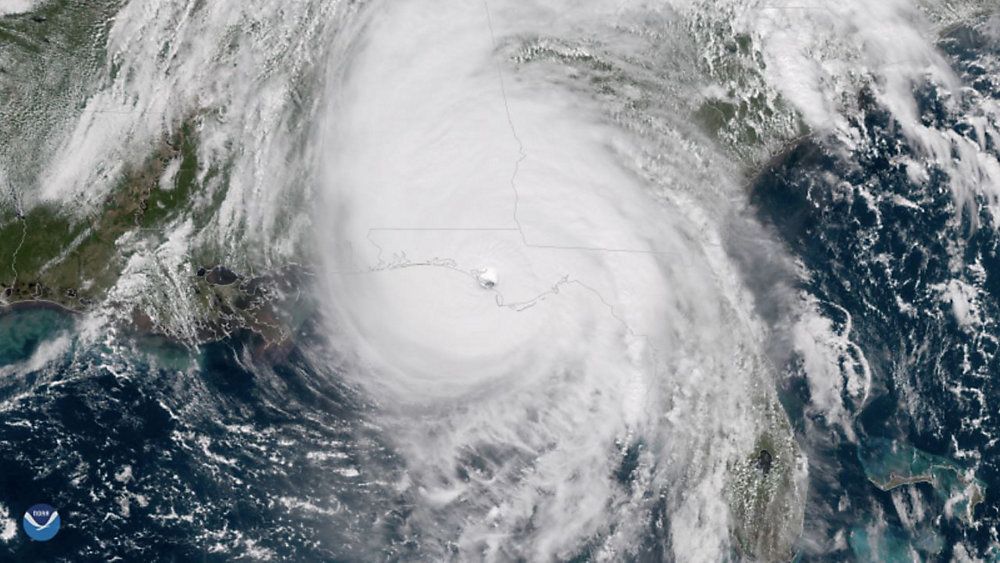It's time to check some myths vs. realities when it comes to the tropics.
Myth #1: The cone is a forecast.
Reality: The cone that is shown during tropical forecasts is actually not a forecast at all. It is a cone of historical error. So, simply put, it is a graphical representation of average historical track error at various forecast times. The forecast times are 12, 24, 36, 48, 72, 96, and 120 hours. As the time from current position gets farther away, the average historical error increases. This is why the cone gets wider the further out in time you go.
- WEATHER BLOG: Explaining, Understanding the "Cone"
- RELATED: Track the Tropics on Spectrum Bay News 9
- RELATED: Storm Season 2019
- More Spectrum Bay News 9 Weather Blogs
Myth#2: Tape your home’s windows to prevent them from breaking in a storm.
Reality: Taping your windows will essentially just be a waste of time for you. First off, it really isn’t going to do anything as if debris hits your window from hurricane force winds, the tape won’t hold it in place. So, your window will break into your home anyway. Second, if there ends up not being any damage to your window, by the time you get to removing tape, the process of removing it will be extremely difficult especially in areas where you have direct sunshine on your windows. If you want to protect your windows and your home from debris coming in, you are going to want to get either impact resistant windows, shutters or board up your windows before a storm comes.
Myth#3: Fill your bathtub so you have drinking water during and after a storm.
Reality: If your bathtub is used for regular showers or bathing, then you will not be able to sanitize your tube effectively to make the water safe to drink. You can use it for washing clothes, bathing or helping in flushing toilets, however. There are products on the market that you can put into your bathtub and fill them up but it may just be easier to get bottled water instead. Bottled water, stored in a cool, dry place can last for years.
Myth#4: Crack open a window to equalize pressure in the home.
Reality: There’s a belief that if you don’t crack open your windows during a tornado or a hurricane, the pressure from the storm will cause your windows to blow out, which can lead to more damage in the home. It’s just not so. Debris impact is what causes windows to break, not pressure. Plus, if this were true, then that means that your home would be airtight. Since we are able to breathe in our homes, then the air (or outside pressure) is coming into your home anyway, so a significant pressure difference will not be the result.
Myth#5 : If I’m inland, I’m safe from a storm.
Reality: This would be more accurate if storm surge were the only hazard from a hurricane. But, even some locations that people believe are inland, may be near rivers that are influenced by tides. Plus, as we have seen before, inland locations are certainly still prone to dangerous hurricane force wind and potential for flooding from the heavy rain.
Myth#6: Shelters are available and fully-stocked, so why have a plan ahead of time?
Reality: Shelters should always be treated as a last resort for your evacuation plan. It is best to find a location nearby that is well built and out of an evacuation zone. It could be a friend or family member’s house. Also, not all shelters can accommodate people with special needs or pets. And you don’t EVER want to leave your pet in your home if you have been ordered to evacuate.
Myth #7: I don’t need to evacuate until the weather starts to get bad.
Reality: If you are ordered to evacuate, you should do so when the order is given. Those orders are given to get people out in time BEFORE the storm hits. Emergency services will not be available immediately in areas that have been ordered to evacuate. Plus, you may not know where you are supposed to evacuate to. And, if you wait too long, traffic may be so bad that you aren’t able to reach a safe location in time.
Myth #8: The higher floors in my apartment or condo will be safe from the storm.
Reality: The wind actually increases the higher up you go. The higher wind can actually blow out the windows with flying debris. Also, if your location is in a flood zone and there is storm surge flooding, you can actually become trapped in a higher floor with no way to safely get out of the building. So, if you are in an evacuation zone you need to leave. And, if you are in a high rise of some kind not in an evacuation zone, you should be on a lower floor away from the windows.
Myth #9: Preparing for a storm is too expensive.
Reality: There are always things that you can do to prepare for a storm. Throughout the year, you can stock on periodically on supplies needed for if and when a storm hits. Also, the cost of not preparing is far greater with the potential for loss of life.



